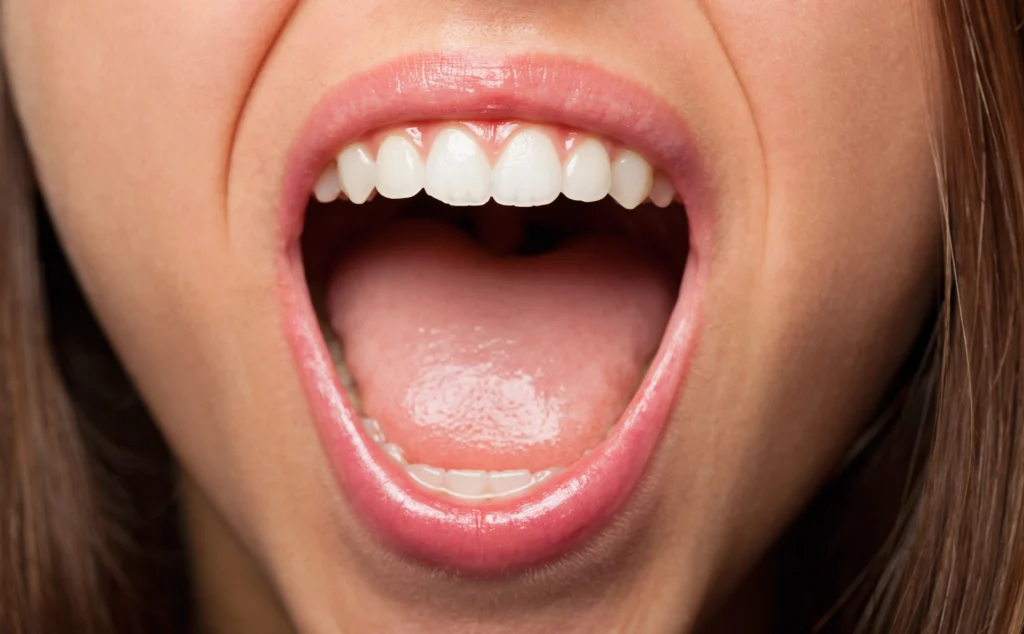Tongue Health Chart: A Complete Guide
The tongue health chart can provide important information about your health. It not only helps in understanding your oral health but can also be an indicator of your overall physical health. In this blog, we will discuss the importance of tongue health chart, its various aspects, and how to read it.
You must have heard the saying – “Jaisi Khaenge Ann, Vaisa Hi Hoga Ghal – As You Eat, So Shall Be Your Body”. This is not just true for your stomach but also for your tongue! Your tongue can be an amazing indicator of what is happening inside your body.
The Tongue Health Chart helps you understand what the colour and texture of your tongue says about your overall health. So let’s dig deeper!
What is a tongue health chart?
The tongue health chart is a tool that gives indications about your health based on the color, texture, and shape of your tongue. It is used by various practitioners, especially in Ayurvedic and traditional Chinese medicine, to identify any imbalances or diseases in your body.
Importance of Tongue Health Chart
The tongue health chart is used to track your oral and overall health. It is important for the following reasons:
Disease identification:
Based on the color, texture, and other characteristics of the tongue, practitioners can identify various diseases.
Health monitoring:
It is a simple way to monitor your overall health.
Timely treatment:
Early identification of any problem allows for timely treatment.
How to read a tongue health chart?

Pay attention to the following points to read a tongue health chart:
1. Tongue color
The color of the tongue gives important information about your health:
Pink tongue:
This is the color of a normal and healthy tongue.
Red tongue:
This may be a sign of heat or infection in the body.
Yellow tongue:
This may be a sign of a liver or stomach problem.
White tongue:
This may be a sign of a fungal infection or dehydration.
Blue or purple tongue:
This may be a sign of lack of oxygen or a problem with blood circulation.
2. Tongue texture
The texture of the tongue also gives important indications:
Smooth tongue:
This may be a sign of vitamin deficiency or anemia.
Cracked tongue:
This may be a sign of dehydration or oral infection.
Hairy tongue:
This may be a sign of poor oral hygiene.
3. Tongue shape
The shape of the tongue is also important:
Swollen tongue:
This may be a sign of allergy, infection, or side effects of medications.
Small tongue:
This may be a sign of a nervous system problem.
Tongue Health Chart and Ayurveda
Tongue health charts have special significance in Ayurveda. Ayurvedic practitioners analyze the different doshas (vata, pitta, kapha) by looking at different parts of the tongue. Based on this, they recommend appropriate treatment and diet.
Vata dosha
Symptoms: Dry, thin, and cracked tongue
Treatment: Hydration, oily foods, and herbs that pacify vata
Pitta dosha
Symptoms: Red, swollen, and burning tongue
Treatment: Cooling and calming foods, herbs that pacify pitta
Kapha dosha
Symptoms: White coating, heavy, and swollen tongue
Treatment: Light and warm foods, herbs that balance kapha
Tips for Tongue Health Chart
Regular check-ups:
Check your tongue regularly. This will help you identify any abnormalities early.
Oral hygiene:
Maintain good oral hygiene. This will reduce the chances of bacterial and fungal infections on the tongue.
Healthy diet:
Eat a balanced and nutritious diet. This will keep your tongue and overall health better.
Water Intake:
Drink enough water. This will keep your tongue hydrated and prevent dryness.
Regular Medical Consultation: Do not ignore any abnormality and consult a doctor regularly.

It is important to identify the early signs of tongue diseases so that timely treatment can be done. Here are some common early signs:
1. Change in color
Red or pink tongue: An extremely red or pink tongue can be a sign of infection, irritation, or other problems.
White spots: May be a sign of fungal infection (such as oral thrush) or leukoplakia.
Yellow spots: May be a sign of liver problems or gastrointestinal disorders.
2. Change in texture
Cracked tongue: A dry or cracked tongue can be a sign of lack of hydration or nutritional deficiencies.
Smooth tongue: An abnormally smooth tongue can be a sign of anemia or vitamin B12 deficiency.
3. Pain or burning
Persistent pain or burning: Experiencing pain or burning in the tongue for no apparent reason.
Ulcers or blisters: Small, painful ulcers that do not heal over time.
4. Swelling
Swollen tongue: The tongue swells or increases in size, which can be a sign of allergy, infection, or trauma.
5. Thick coating
Thick white, yellow, or gray coating: Abnormal coating on the tongue that persists even after brushing.
6. Change in taste
Loss or change in taste: Sudden change in taste or loss of taste of food.
7. Lumps or warts
Small lumps or warts on the tongue: Small lumps or warts that may grow larger or more painful over time.
8. Bad breath
Persistent bad breath: Bad breath that persists despite oral hygiene.
9. Problems with tongue movement
Difficulty in moving: Difficulty or abnormal stiffness in moving the tongue.
10. Burning or itching in the mouth
Burning or itching: Experience of burning or itching in the mouth for no apparent reason.
What to do?
If you experience any of these early signs, you should take the following steps:
Consult a dentist:
Get checked by an oral health specialist.
Health checkup:
Get a health checkup from a general practitioner.
Maintain oral hygiene:Brush and clean the tongue regularly.
Eat a healthy diet:Eat a nutritious and balanced diet.
Drink enough water: Drink enough water to avoid dehydration.
Do not ignore the early signs and get timely checkups done. This can help you avoid serious problems and maintain your oral and overall health.
Conclusion
The tongue health chart is an important indicator of your health. Understanding and reading it can help you monitor your oral and overall health better. By paying attention to the color, texture, and shape of the tongue, you can identify any potential problems early and get timely treatment.
Check your tongue regularly, maintain oral hygiene, eat a healthy diet, and drink enough water. By following these tips, you can improve your tongue and overall health.
Finally, remember that the tongue health chart is an important part of your health and should not be ignored. Make your health a priority and take appropriate steps to live a healthy life.
Thank you for reading this blog. We hope this information will prove useful to you and you will stay healthy by adopting it in your daily life. Contact us for any queries about the Tongue Health Chart. Stay healthy and happy!
visit us for more interesting facts : Gossipmatrix.com
Here are some frequently asked questions about tongue health and its chart, along with their answers:
- What does a healthy tongue look like?
- A healthy tongue typically appears pink with a slightly rough texture from small bumps known as papillae. It should be free of any unusual spots or coating. If your tongue looks different, it could indicate an underlying issue.
- What causes a white-coated tongue?
- A white coating on the tongue can result from dehydration, smoking, oral thrush (fungal infection), or poor oral hygiene. It can also indicate other health conditions that may need attention.
- How often should I clean my tongue?
- Ideally, you should clean your tongue daily as part of your oral hygiene routine. You can either brush it gently with your toothbrush or use a tongue scraper to remove bacteria and food particles more effectively.
- Is tongue discoloration always a sign of illness?
- No, tongue discoloration isn’t always due to illness. Certain foods, drinks, and habits like smoking can temporarily change the tongue’s color. However, persistent discoloration may be linked to underlying health issues like vitamin deficiencies or infections.
- Can poor tongue health affect taste?
- Yes, poor tongue health can lead to changes in taste perception. Inflammation, buildup of bacteria, or infections can block the taste buds, reducing your ability to taste properly.
- What do bumps on the tongue mean?
- Bumps on the tongue are usually normal and are called papillae. However, unusually large or painful bumps may indicate irritation, infection, or other health issues that may need to be addressed.
- Is tongue scraping better than brushing?
- Tongue scraping is considered more effective than brushing for removing bacteria, debris, and dead cells from the tongue’s surface. Regular scraping can improve breath and promote better oral health.
- When should I see a doctor for tongue issues?
- You should consult a doctor if you notice persistent white patches, sores that don’t heal, significant changes in color, or any discomfort that lasts for more than a couple of weeks.
By staying mindful of your tongue’s appearance and practicing regular oral hygiene, you can maintain good tongue health and possibly detect early signs of health issues.
for more queries visit other related sites : Tongue Health Chart
Tongue Health Chart https://www.webmd.com/









